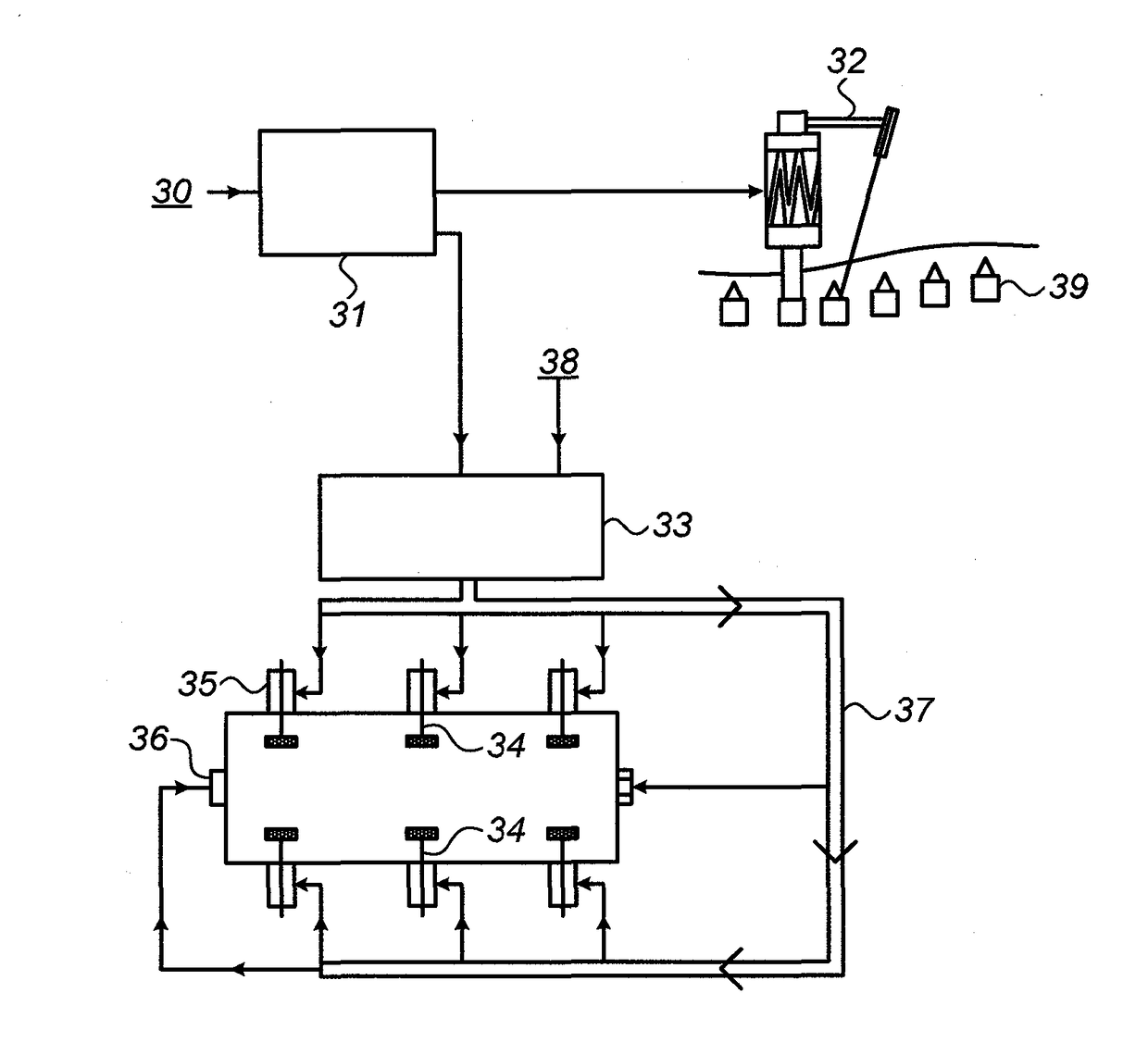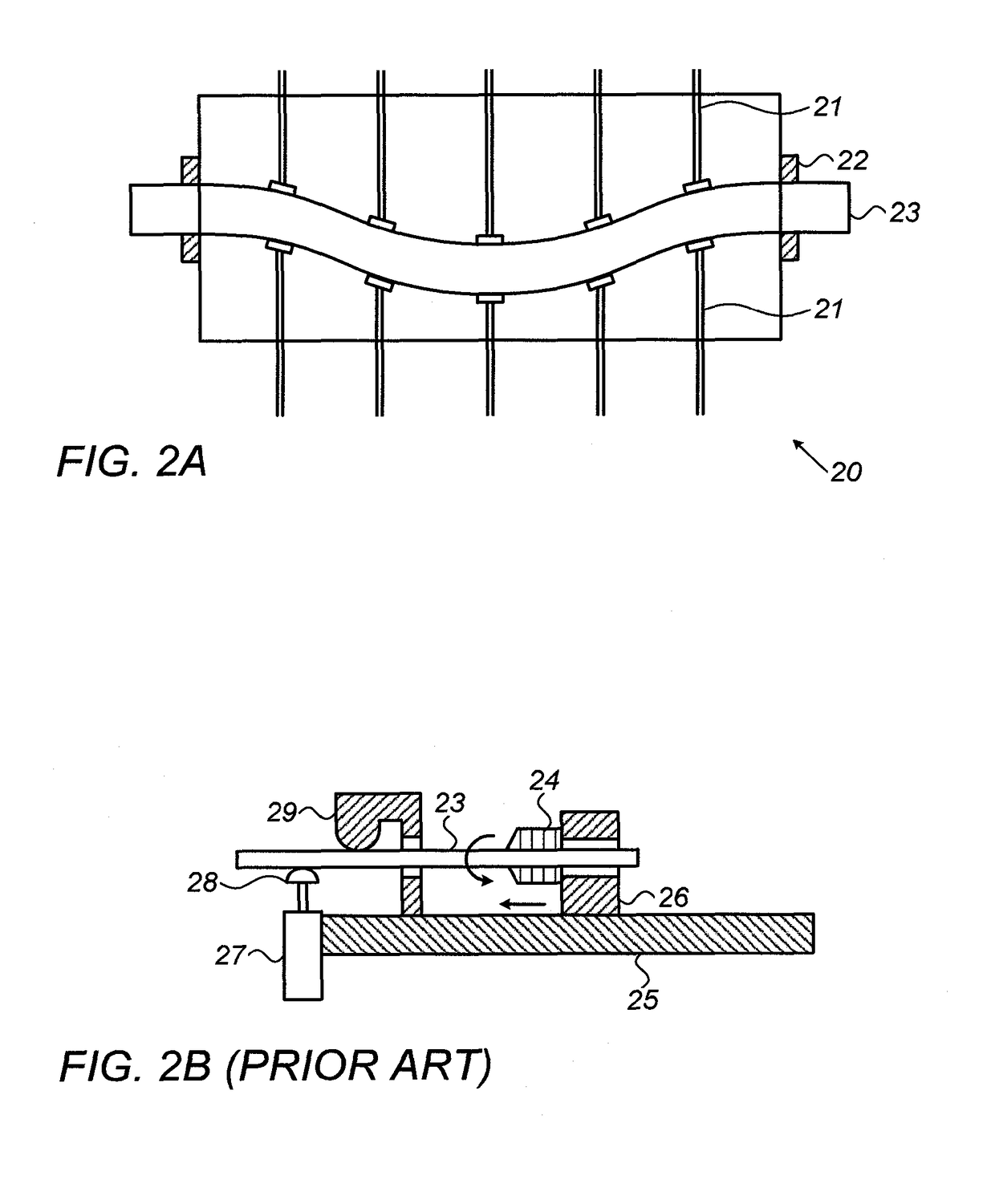Shaper for vertebral fixation rods
a technology for fixing rods and vertebrae, which is applied in the field of rod shape, can solve the problems of compromising the rotation of the rod, severe deformation, and medical staff exposure to additional radiation
- Summary
- Abstract
- Description
- Claims
- Application Information
AI Technical Summary
Benefits of technology
Problems solved by technology
Method used
Image
Examples
Embodiment Construction
[0037]Reference is now made to FIG. 2A, which illustrates schematically a plan view of a rod shaping apparatus 20, using mechanical plungers or pistons 21 for shaping the rod. The rod 23 is firmly held in end clamps 22, which may be rotatable to enable three-dimensional bent shapes to be executed. The plungers or pistons 21 may be driven by hydraulic or pneumatic cylinders, or by electric motors (none of which are shown in FIG. 2A), or by any other motion impartation device that can provide sufficient force to bend the rod as required. In the exemplary apparatus shown in FIG. 2A, the rod-bending process in the plane shown is performed by sets of plungers or pistons, arranged opposite to each other, such that good control is achieved of the bending process, and the bending can be achieved in either direction of concavity. However, it is to be understood that a bend in any direction can also be achieved by having the plunger or piston oriented only at the intended concave side of the ...
PUM
| Property | Measurement | Unit |
|---|---|---|
| diameter | aaaaa | aaaaa |
| flexibility | aaaaa | aaaaa |
| dimension | aaaaa | aaaaa |
Abstract
Description
Claims
Application Information
 Login to View More
Login to View More - R&D
- Intellectual Property
- Life Sciences
- Materials
- Tech Scout
- Unparalleled Data Quality
- Higher Quality Content
- 60% Fewer Hallucinations
Browse by: Latest US Patents, China's latest patents, Technical Efficacy Thesaurus, Application Domain, Technology Topic, Popular Technical Reports.
© 2025 PatSnap. All rights reserved.Legal|Privacy policy|Modern Slavery Act Transparency Statement|Sitemap|About US| Contact US: help@patsnap.com



